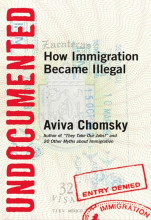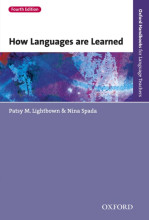Summary: Undocumented How Immigration Became Illegal | 9780807001684 | Aviva Chomsky
- This + 400k other summaries
- A unique study and practice tool
- Never study anything twice again
- Get the grades you hope for
- 100% sure, 100% understanding
Read the summary and the most important questions on Undocumented How Immigration Became Illegal | 9780807001684 | Aviva Chomsky
-
4 What Part of Illegal Do You Understand?
-
Why do some government agencies welcome the undocumented,while others ignore them, and still others threaten, imprison, and deport them?
The Federal government departments often have programs whose ends are often at odds, e.g., WIC food programs, social security, or ICE. -
What really determines immigrant status, and why does it seem to change so frequently and unpredictably?
Immigration laws and policies have been created and changed repeatedly due to changes in political powers, corporate influence, and public sentiment. -
How can immigrants plan for the future or prepare, when everything seems so capricious?
Based on the history of U.S. immigration laws and policies, immigrants can't rely on plans or preparations. -
4.1 The Blurriness of Categories
-
Of the approximately 11 million undocumented people in the U.S. in 2011, what percentage have been here since before January 1, 2005?A. 65%B. 74%C. 86 %D. 92%
86% -
Mexicans are overrepresented among those deported: Mexicans make up 58 percent of the undocumented population, but account for _____ % of deportations.A. 63%B. 88%C. 80 %D. 70%
70% -
The Immigration Act of 1990 (IMMACT) created the new category of Temporary Protected Status (TPS), offering temporary protection and work authorization to immigrants from countries affected by ___________ or ____________.
war or natural disaster. -
IMMACT (1990) did not benefit citizens of war-torn countries equally, granting TPS selectively to people from countries supported by the U.S. government. For example, Salvadorans were granted TPS while ________________ were not.
Guatemalans -
"The 1990 American Baptist Churches v. Thornburgh (ABC) Settlement Agreement reopened thousands of political asylum cases, offering a new chance for legal residence for undocumented" ________________ and ________________.
Salvadorans and Guatemalans -
The 1997 Nicaraguan Adjustment and Central America Relief Act (NACARA) was an attempt to address the backlog in asylum cases by offering permanent residency to certain asylum seekers. But NACARA left many _______________ and ________________ people in "limbo," while favoring Cubans and Niaraguans.
Guatemalan and Salvadoran -
What some immigrants do to improve their chances for obtaining legal status if and when the opportunity arises; _____________ _____________
everything possible
- Higher grades + faster learning
- Never study anything twice
- 100% sure, 100% understanding































